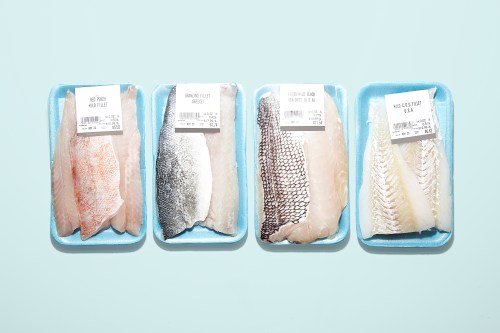After months of hearing celebs and wellness influencers rave about the ketogenic diet, you may be thinking of taking it for a test drive yourself. In theory, it shouldn’t be that hard—all you’ve gotta do is scale down on the carbs, dial up the protein, and eat a lot more fat to reap the ah-mazing benefits, right?
Er, not so fast. The truth is that the ketogenic diet isn’t all avocado roses. In fact, many who take it on without fully understanding the mechanics wind up without the improvements they’d had hoped for—increased energy and focus, improved moods, weight loss—and instead end up suffering from nasty side-effects, warns ketogenic dietitian and Nutricia Keto Ambassador Vanessa Aldaz, MPH, RD, CDE.
Aldaz, who specializes in treating medical conditions through the keto diet, has seen far too many people try to adopt the lifestyle without actually knowing how it works. “You want to make sure that you are safe and successful in your ketogenic diet therapy,” she says. “Whether you’re interested in trying it for a medical condition, for weight loss, or energy and performance improvement, you [must] become well-versed in it.”
One way to prepare: Brush up on the most common mistakes many keto first-timers make, all of which can derail your experience on the diet. Do this, and you’re more likely to be celebrating your success in a month—rather than cursing your fridge full of bacon.
Read on for the most common mistakes people make when going keto (and how to correct them).

1. They don’t do enough research
Before stripping your cabinet free of pasta and stocking it with avocados and grass-fed butter, make sure you get the full 4-1-1. “Many people go on the internet and start doing the ketogenic diet without really understanding its metabolic effects and the changes it will have on the body,” warns Aldaz. “They either get sick due to very quick ketosis and acidosis, or they don’t do it correctly and presume that it just doesn’t work.” There are, after all, a lot of things you need to consider before getting started—like, is this going to be a short-term reboot or a long-term lifestyle? How will your workouts need to change? What’s your plan if you need a snack on the go?
In Aldaz’s opinion, it’s best to seek out the guidance of a keto expert to ensure you’re doing everything right. And if you don’t, she says, check in with your doctor along the way to make sure your bloodwork is healthy, especially if you’re experiencing any symptoms that are interfering with your life. Speaking of which…
2. They go all-in way too quickly
Going from a carb-heavy diet to full-on keto overnight can increase your chances of catching the keto flu, a common roadblock that leads many people call it quits. “The keto flu includes nausea, irritability, tiredness, lethargy, a queasy stomach, and sometimes loss of appetite, which usually occurs when the body is adapting itself and going into ketosis,” explains Aldaz. “Starting slow is key!”
With this in mind, Aldaz advises her clients to ease into ketosis by increasing fats and decreasing carbohydrates over the span of a couple days—and she urges them to stay hydrated during this process. If you do catch the keto flu, consider adding a few more healthy carbs to your meals, like fruits, veggies, or legumes. You may also need to add more fats to make up for any possible calorie deficiency due to the sudden lack of carbs.
Most importantly, don’t go throwing in the towel at the first sign of symptoms. “They usually go away in a few days,” Aldaz says says.

3. They don’t eat enough fat
Yes, it can be hard to wrap your brain around a high-fat diet when you’ve been conditioned for years to believe that low-fat is best. But this is truly the crux of the keto diet. “A lot of patients forget to add sufficient fat to get into ketosis,” says Aldaz, who recommends a diet made up of 70% fat for most people. (For best results, however, you should determine your ideal macro ratio with a professional.) “Remember that this becomes your main source of energy, which the body breaks down and turns into ketones.”
Some clients, she says, ace the low-carb part but fall short on the fats. “Combination meals like chicken breast and spinach are low in carb and can be keto-friendly, but they are certainly not ketogenic if you don’t drench them in a fat like olive oil,” she says. “The golden rule is that all meals must be shining with good fats!” Would it sparkle under the lens of your KiraKira app? That’s the real test.
4. They ignore food labels
Stocking your pantry with keto-approved foods isn’t as easy as it seems, thanks to sneaky labels. When starting the diet, make sure to look past buzzwords like “sugar-free” and scan the nutrition facts instead. “Foods that contain sugar alcohols, many times labeled as sugar-free, can often interfere with ketosis since the body in general will absorb half of the sugar alcohols and metabolize them as a sugar while the other half goes unabsorbed,” she says.
Also take note of total carbohydrates and portion size, especially when it comes to nut butters. “Although they are high in fat, they still need to be portion-controlled,” she says. “And make sure you’re grabbing the natural types without any added sugars.”

5. They aren’t patient with the process
If you took on the keto lifestyle with your BFF and find yourself wondering why she’s full of energy and you’re well, exhausted, it doesn’t mean you’re doing something wrong. “In general, the positive effects of the diet can vary from person to person and can be experienced at different times and different levels and intensities,” says Aldaz. While there’s no official time frame for noticing the benefits, many people bow out if they don’t see immediate improvements.
But by giving yourself ample time to adjust to the diet, eating appropriate healthy fats and monitoring how you feel, rest assured that you should start experiencing that keto high eventually. “Some may see changes within the first few weeks or the first month, while others might not see much until after 3 months—or even longer,” Aldaz points out.
And if you don’t, a medical professional or nutritionist can help you decide if the diet just isn’t going to work for you. Like dating, not every way of eating is going to be a match for every person—but know that there are plenty of other options out there if you’re just not that into keto.
Start your keto meal plan off right with these picks for the perfect grain-free breakfast, weeknight dinner, and decadent dessert.
And FYI we want to hear your opinions: Tell us through this survey— and you’ll be entered to win $250!
Sign Up for Our Daily Newsletter
Get all the latest in wellness, trends, food, fitness, beauty, and more delivered right to your inbox.
Got it, you've been added to our email list.











